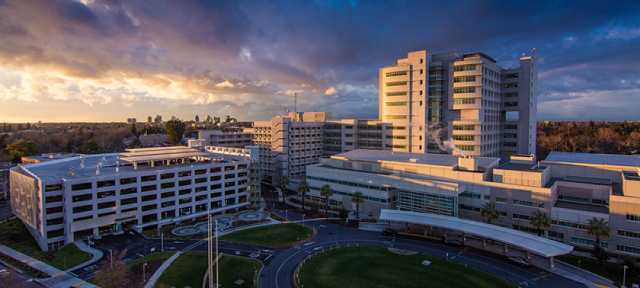Most Unvaccinated and Trending Younger
SACRAMENTO, Calif. – The Emergency Department (ED) at UC Davis Medical Center saw a 33% increase in COVID-19 patients during the first week of August, providing treatment for 107 patients, up from 80 patients the week before. The number for the week is just eight fewer than the all-time high since the pandemic began; during the week of December 20, 2020, when COVID-19 was surging in California, the ED saw 115 patients.
“The numbers are astonishing, and at the same time, we are seeing no decrease in the number of non-COVID ED visits,” said Nathan Kuppermann, professor and chair in the Department of Emergency Medicine. “This is leading to substantial crowding of the ED, despite creating a special area for the care of patients with COVID.”
“We need to strongly encourage masking in the community and emphatically encourage those who have not been vaccinated to get their vaccine.”
Nathan Kuppermann, professor and chair in the Dept. of Emergency Medicine
“We are always ready to care for patients in any emergency, but this is stressing our capacity. We need to strongly encourage masking in the community and emphatically encourage those who have not been vaccinated to get their vaccine,” Kuppermann said. “These two interventions have been scientifically proven to greatly prevent the transmission and the seriousness of the disease. And to be clear, COVID-19 is a serious disease that can not only lead to death, but to long-term problems.”
Increase began in June.
During the week of June 13, the Emergency Department saw the lowest number of COVID-19 cases for the entire year – just nine patients.
Weekly case counts of COVID-19 patients seen in the Emergency Department during 2021.

“The perfect storm”
That was the week California terminated its stay-at-home order and mandatory mask requirements and allowed businesses to reopen. But mid-June was also when a new COVID-19 variant, the Delta variant, began making news in the U.S.
“We had this sense that things were beginning to return to normal,” said Nick Sawyer, a physician in the Department of Emergency Medicine at UC Davis Health. “But instead, it turned out to be the perfect storm.”
The week after California’s reopening, cases doubled in the Emergency Department and then steadily rose. By the end of July, the ED saw 80 COVID-19 patients in one week, a number comparable to the surge in January, when vaccines were beginning to roll out in California. During the week of August 1 to 7, the number increased to 107.
COVID-19 patients are younger
COVID-19 cases seen in the Emergency Department by age group.

Physicians in the ED report that most of the symptomatic COVID-19 patients they are seeing are unvaccinated. And they are trending younger, with 42% between the ages of 20 and 39; 17% are 19 years of age or younger.
“We are seeing young, otherwise healthy unvaccinated patients who are coming in with varying symptoms, ranging from gastrointestinal upset, fever, coughing, and sore throat to full-blown respiratory failure requiring intubation. It’s very sad.
Nick Sawyer, Emergency Room Physician
Some of the patients he is seeing are very young. “A woman came in with her toddler, who was ill. The mother had been vaccinated, but her boyfriend had not. Her toddler ended up getting COVID, which was very upsetting for her.”
Over 80 percent of the COVID-19 positive patients tested at UC Davis have the Delta variant, which is significantly more contagious. “It’s very transmissible. It has an R0 of about seven, which means in an unvaccinated population, for every one person who contracts the disease, an average of seven people will also get sick. The original virus had an R0 between 2 and 3,” Sawyer explained.
Sicker Quicker
Although there is no hard data yet, the Delta variant may also make people sicker. Like other frontline doctors across the country, Sawyer is seeing younger patients getting “sicker quicker.”
“We had to intubate a teenager with COVID-19,” Sawyer said. With intubation, a tube is placed into a patient’s windpipe through the mouth. The tube is connected to a ventilator to assist with breathing.
“Get vaccinated…wear a mask”
Sawyer’s advice: “Get vaccinated! Vaccines are very safe and effective.” He also suggests returning to behaviors people practiced earlier in the pandemic. “Wear a mask and social distance – protect yourself and others. We are here for people 24 hours a day, seven days a week, 365 days of the year. But I don’t like to see patients coming into the Emergency Department with COVID-19, unvaccinated,” Sawyer said.
“For those who are critically ill with COVID-19, there still aren’t many effective medications that have been shown to save the sickest patients, so the most we can do is provide the standard advanced level supportive critical care,” Sawyer said.
Information about where you can get the free COVID-19 vaccine in California is available at https://myturn.ca.gov/.
(21+ years strong)
Welcome to the brighter side!
Get in front of local customers! 24/7 (365)





















